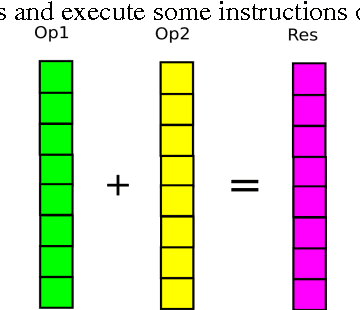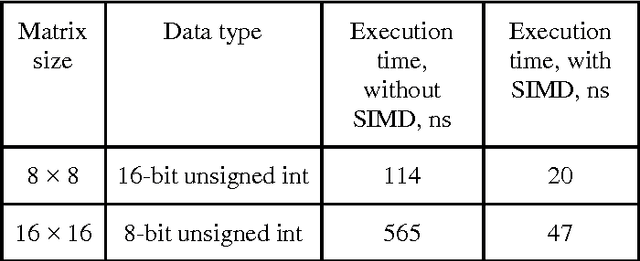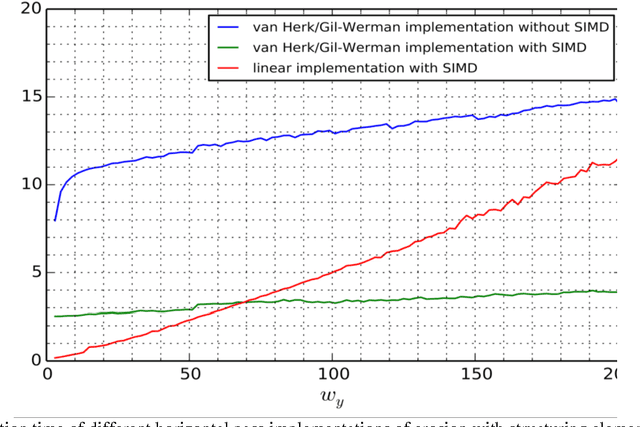Vladimir Arlazarov
Fast Implementation of Morphological Filtering Using ARM NEON Extension
Feb 19, 2020



Abstract:In this paper we consider speedup potential of morphological image filtering on ARM processors. Morphological operations are widely used in image analysis and recognition and their speedup in some cases can significantly reduce overall execution time of recognition. More specifically, we propose fast implementation of erosion and dilation using ARM SIMD extension NEON. These operations with the rectangular structuring element are separable. They were implemented using the advantages of separability as sequential horizontal and vertical passes. Each pass was implemented using van Herk/Gil-Werman algorithm for large windows and low-constant linear complexity algorithm for small windows. Final implementation was improved with SIMD and used a combination of these methods. We also considered fast transpose implementation of 8x8 and 16x16 matrices using ARM NEON to get additional computational gain for morphological operations. Experiments showed 3 times efficiency increase for final implementation of erosion and dilation compared to van Herk/Gil-Werman algorithm without SIMD, 5.7 times speedup for 8x8 matrix transpose and 12 times speedup for 16x16 matrix transpose compared to transpose without SIMD.
* 6 pages, 4 figures
HoughNet: neural network architecture for vanishing points detection
Oct 06, 2019



Abstract:In this paper we introduce a novel neural network architecture based on Fast Hough Transform layer. The layer of this type allows our neural network to accumulate features from linear areas across the entire image instead of local areas. We demonstrate its potential by solving the problem of vanishing points detection in the images of documents. Such problem occurs when dealing with camera shots of the documents in uncontrolled conditions. In this case, the document image can suffer several specific distortions including projective transform. To train our model, we use MIDV-500 dataset and provide testing results. The strong generalization ability of the suggested method is proven with its applying to a completely different ICDAR 2011 dewarping contest. In previously published papers considering these dataset authors measured the quality of vanishing point detection by counting correctly recognized words with open OCR engine Tesseract. To compare with them, we reproduce this experiment and show that our method outperforms the state-of-the-art result.
* 6 pages, 6 figures, 2 tables, 28 references, conference
 Add to Chrome
Add to Chrome Add to Firefox
Add to Firefox Add to Edge
Add to Edge